You’re in Maine, and the night sky beckons with its celestial wonders. The Milky Way, a spectacle containing our solar system, awaits your gaze. To fully immerse in this experience, you need to know when and where to look.
But the Milky Way isn’t always visible. It demands the right timing. Summer’s late July to August window offers clear skies and new moon nights, perfect for stargazing. But outside this period, your chances diminish.
I will guide you through this article. You’ll discover the prime times and ideal spots in Maine for stargazing. From Acadia National Park to the less-known Blue Hill, get ready to explore Maine’s sky in its full glory.
Key Things to Know:
- The best time for stargazing is late July to August for clear skies and new moon nights.
- Prime locations: Acadia National Park, Blueberry Pond Observatory, and Schoodic Institute.
- Impact of light pollution: Seek dark sky preserves for optimal viewing.
- Essential astrophotography gear: DSLR camera, tripod, and red light flashlight.
Introduction: Can You See the Milky Way in Maine?

Stargazing is popular in Maine, where the night sky often showcases celestial wonders. The Milky Way, a galaxy that contains our solar system, is a sight I’ve marveled at on many clear Maine nights. To make the most of your stargazing experience in Maine, you need to know the best time to view the Milky Way and the ideal locations for stargazing.
FREE STARGAZING CHECKLIST
My 5-page Stargazing Checklist will enhance your astronomical observations.
Follow this free checklist to navigate the night sky with confidence, clarity, and a sense of preparedness for a rewarding stargazing experience.

Best Time to View the Milky Way
I’ve found that the prime time for stargazing in Maine is between late July and August.
This period is ideal for the following reasons:
- Clear skies: Summer months offer more stable weather and less rainfall, significantly increasing the number of clear nights.
- New moon: The moonlight can affect the visibility of stars and galaxies. Aim for nights when the moon is in its new phase, as this will provide the darkest skies.
Keep in mind that the Milky Way is not visible all year round. It can best be seen during the summer when the galaxy’s core rises above the horizon.
Read my dedicated article about the Milky Way Season, when its core is visible.
Ideal Locations for Stargazing in Maine
Maine offers a variety of locations suitable for stargazing.
Some popular spots include:
- Acadia National Park: Known for its dark skies, the park hosts an annual event called Acadia Night Sky Week. Cadillac Mountain, Sand Beach, and Jordan Pond are critical locations for stargazing within the park.
- Blueberry Pond Observatory: Since 1999, this observatory offers access to powerful telescopes, enhancing your night sky viewing experience.
- Schoodic Institute: Located in Acadia National Park, the institute regularly holds stargazing events and guided tours of the Milky Way’s constellations.
For a complete list of the best stargazing spots in Main, be sure to read my dedicated article Maine Stargazing.

Remember to dress warmly, bring a comfortable chair or blanket, and keep your eyes peeled for the breathtaking celestial wonders Maine’s skies offer.
Read my separate article about stargazing in Acadia National Park.

Understanding Light Pollution

Impact on Night Sky Visibility
Light pollution is the artificial brightness in the night sky caused by various light sources such as streetlights, buildings, and cars. This excess light washes out the sky, making it challenging to see celestial objects like the Milky Way.
The International Dark-Sky Association works to protect and preserve dark skies by promoting responsible lighting practices and raising awareness.
Here are some common effects of light pollution on night sky visibility:
- Obscures stars and constellations
- Makes it more challenging to see the Milky Way
- Reduces the visibility of meteors during meteor showers
Maine’s Dark Sky Preserves
Due to their minimal light pollution, Maine is fortunate to have some areas designated as dark sky preserves. These locations offer incredible night sky viewing opportunities for stargazers.
The following are some famous dark sky preserves in Maine:
- Acadia National Park – Known for its stunning landscapes and beautiful night skies, Acadia National Park is a perfect spot to observe the Milky Way away from city lights.
- Blue Hill – A less-known location with dark skies and limited light pollution, Blue Hill offers a serene environment for stargazing.
- 100-Mile Wilderness – As part of the Appalachian Trail, the 100-Mile Wilderness is an ideal remote location offering pristine night sky views.
Remember to check the weather for clear skies and low humidity when planning a stargazing trip in Maine. Additionally, avoid visiting during a full moon as its brightness can make it more difficult to see the Milky Way. Enjoy exploring these dark sky preserves and experience the breathtaking beauty of the night sky in Maine.
Acadia National Park and the Milky Way
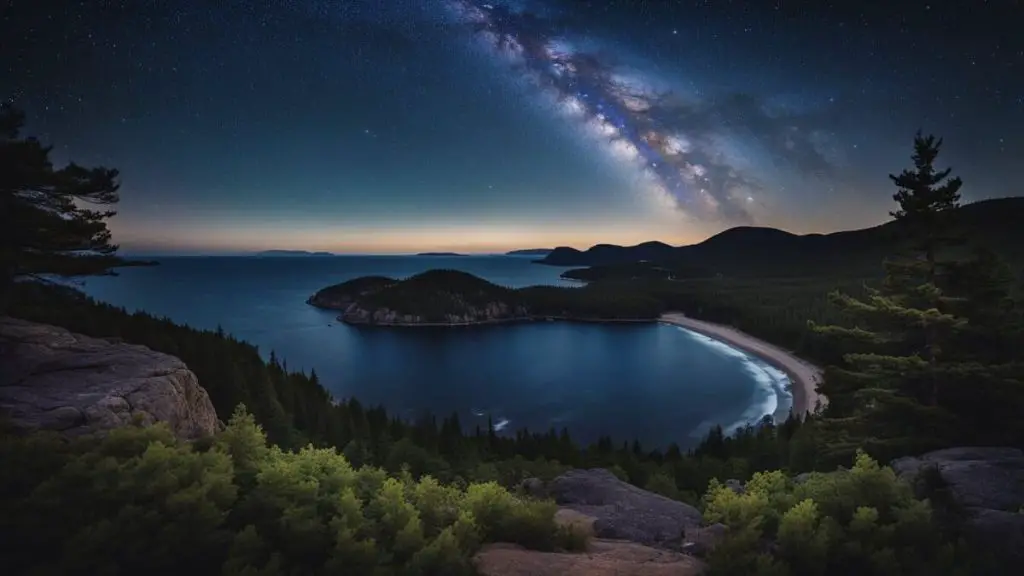
Cadillac Mountain as a Prime Viewpoint
Acadia National Park in Maine is an excellent spot for stargazing and viewing the Milky Way. One of the park’s highlights is the stunning Cadillac Mountain, a prime viewpoint for observing the cosmos. Due to the darker skies, you can see the Milky Way clearly cutting through the night sky.
To make your stargazing experience memorable, here are some tips:
- Drive up to Cadillac Mountain: Reach the summit by driving as it offers fantastic panoramic views.
- Visit during nighttime: The best time to see the Milky Way is after sunset when the skies are darker.
- Check weather conditions: Clear skies are optimal for stargazing, so plan your trip accordingly.
Acadia Night Sky Festival
If you’re in Maine around September, take advantage of the Acadia Night Sky Festival. This event offers a fantastic opportunity to explore the night sky with experts and enjoy the following activities:
- Stargazing parties
- Astrophotography workshops
- Interactive exhibits
- Astronomy talks and presentations
By visiting Acadia National Park, you’ll witness the Milky Way’s enchanting beauty and participate in the exciting Night Sky Festival. Remember to plan your trip during the best stargazing conditions and make the most of your unforgettable experience under the starry Maine sky.
Astrophotography in Maine
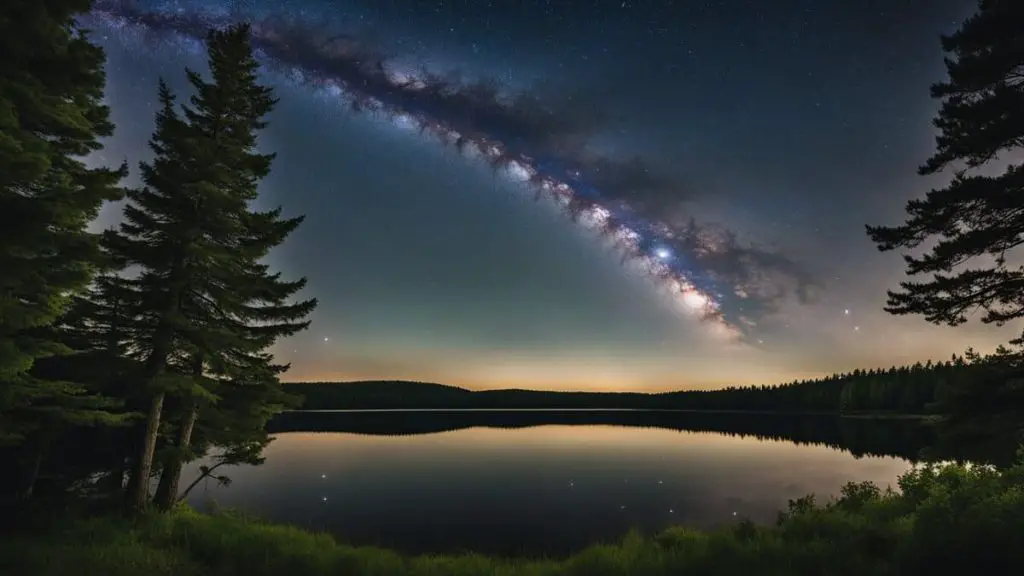
Basic Equipment and Techniques
Astrophotography in Maine allows you to capture stunning images of the Milky Way and other celestial objects.
To get started, you’ll need some essential equipment:
- A DSLR or mirrorless camera with manual mode
- A sturdy tripod
- A remote shutter release or self-timer
- A flashlight with a red light option to preserve your night vision
In my experience, to set up your shot, find a location with minimal light pollution and wait for the moon to set. Place your camera on the tripod and switch it to manual mode. Set the exposure time to around 30 seconds, and use a wide aperture to allow more light to reach the sensor. Lastly, focus your lens to infinity and frame your image.
Best Practices for Night Sky Photography
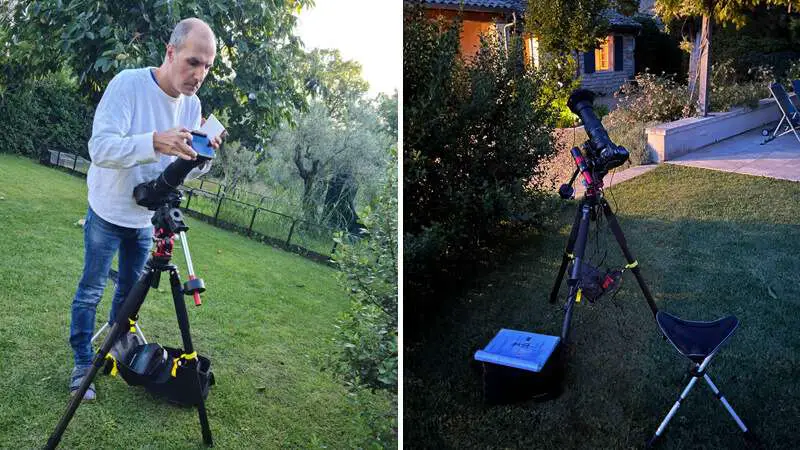
Here are some tips for capturing the best astrophotography images in Maine:
- Scout your location during daylight to familiarize yourself with the surroundings and find interesting compositions.
- Check the weather forecast and moon phase to ensure clear skies and optimal visibility.
- Use the camera’s live view feature to focus on a bright star, as this can be more accurate than using the viewfinder.
- Use a remote shutter release or set a self-timer to prevent camera movement.
- Experiment with different exposure times and ISO settings to find the best balance between light and noise.
Remember, practice makes perfect. So keep honing your skills, and you’ll become a skilled astrophotographer capturing the breathtaking Maine night sky.
Guided Stargazing and Educational Resources
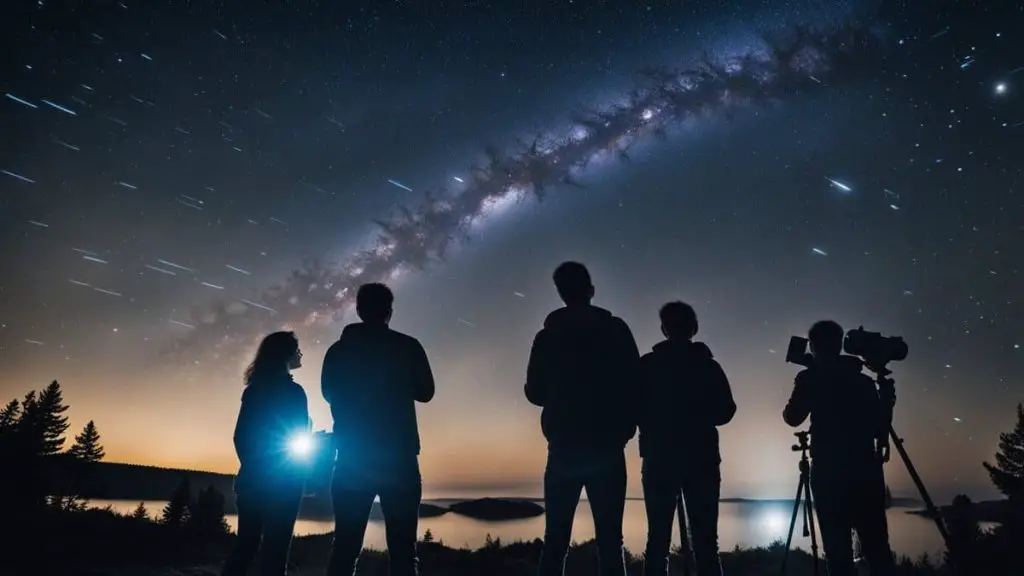
Local Astronomy Clubs and Observatories
In my stargazing adventures, I’ve found that Maine offers numerous learning and enjoyment opportunities. Institutions like the Blueberry Pond Observatory and the Coastal Rivers Conservation Trust often host public events such as guided stargazing nights and educational programs.
You can participate in these events to improve your understanding of the night sky and enjoy a unique stargazing experience.
Some of the benefits of attending these events include:
- Expert guidance to help you locate constellations and celestial objects
- Access to a variety of telescopes and astronomy equipment
- Opportunities to meet and share your passion for stargazing with other amateurs
Online Space Forums and Communities
If you prefer exploring the night sky from the comfort of your home, you can join online space forums and communities. These platforms offer a wealth of information for amateur astronomers, including observing tips, equipment advice, and updates on celestial events.
Here are some guidelines to follow when joining these online platforms:
- Sign up with a valid email address to receive regular updates and notifications.
- Be respectful and courteous towards other members and listen to their advice and feedback.
- Share your knowledge and experience to help others learn and grow as stargazers.
You can find active groups on popular social media platforms like Facebook or join dedicated space forums like Cloudy Nights.
Through these local and online resources, you can deepen your understanding of the night sky and make the most of your Maine stargazing experience. Remember to bundle up, pack some snacks, and, most importantly, have fun exploring our wondrous universe!
Cultural and Historical Perspectives of the Night Sky

Wabanaki People and Celestial Traditions
The night sky significantly impacts the cultural and historical perspectives of various groups of people. One example is the Wabanaki people of Maine and other parts of New England.
The Wabanaki have a long-standing tradition of connecting to the night sky for guidance, storytelling, and cultural significance. When you observe the night sky at sunset in Maine, you experience a piece of Wabanaki history.
The Wabanaki people have celestial traditions that connect them to the cosmos. Some critical pointers about their connection to the night sky are:
- Their knowledge of constellations and their positions are passed down through generations
- The night sky is an essential aspect of their oral tradition and storytelling
- Wabanaki people use the night sky to understand the changing of the seasons
As an amateur astronomy enthusiast, visiting Maine offers a unique opportunity to experience the vast night sky in a way that’s similar to the Wabanaki people’s traditions. You may find yourself connected to their rich history as you gaze off into the infinity of space.
Part of preserving the night sky for future generations involves conservation efforts.
As a stargazer, you can do your part to help protect the night skies in Maine:
- Use red-filtered flashlights or mobile apps with a red-light setting to minimize light pollution
- Encourage friends and family to embrace dark sky-friendly lighting for their homes
- Support local dark sky conservation efforts and organizations
By following these simple steps, you’ll contribute to the ongoing efforts to preserve the beautiful night sky in Maine and promote the cultural heritage of the Wabanaki people. Enjoy your stargazing experience, taking in all its historical and cultural significance.
Planning Your Stargazing Trip
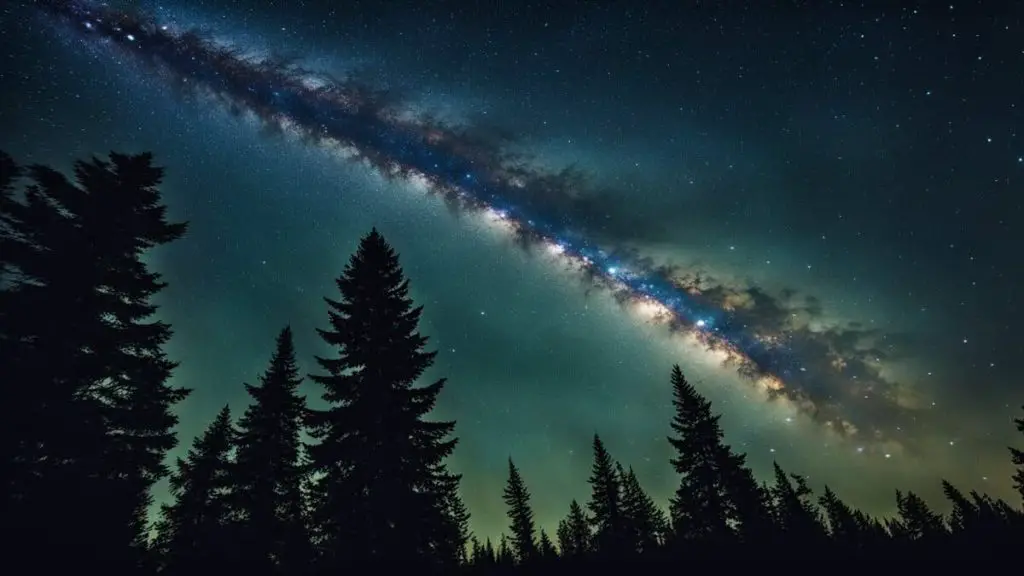
What to Bring for a Night Under the Stars
I bring a few essentials whenever I plan to witness the Milky Way in Maine.
Here’s a list of items you’ll need:
- A hiking trail map: Explore the numerous hiking trails and sites for ideal stargazing spots.
- A flashlight with a red filter: Preserve your night vision and minimize light pollution using a red-filtered flashlight.
- A comfortable chair or blanket: Enjoy the celestial view by comfortably sitting or lying down.
- Sky map and compass: Enhance your experience by identifying celestial features with a sky map and compass.
Remember to dress in warm layers, as temperatures can drop significantly at night, even in the warmer months.
Safety and Etiquette When Stargazing
To ensure a safe and enjoyable stargazing experience, it’s important to follow a few basic guidelines:
- Check the moonrise time: A bright moon can wash out the light from fainter celestial objects. Plan your stargazing trip around the new moon or when the moon is below the horizon.
- Keep noise levels down: Be courteous to other stargazers and wildlife in the area by maintaining a quiet atmosphere during observation.
- Leave No Trace: Clean up after yourself and leave the site as you found it to preserve the beauty of nature for others to enjoy.
- Check weather conditions: Clear skies are essential for stargazing, so plan your excursion around favorable weather. Watching the weather forecast can give you a better idea of when the skies will be clear.
By following these guidelines, you can be confident that your Maine stargazing trip will be both enjoyable and safe in your pursuit of the wonders of the Milky Way.
Related articles:
Seasonal Skywatching Events and Phenomena
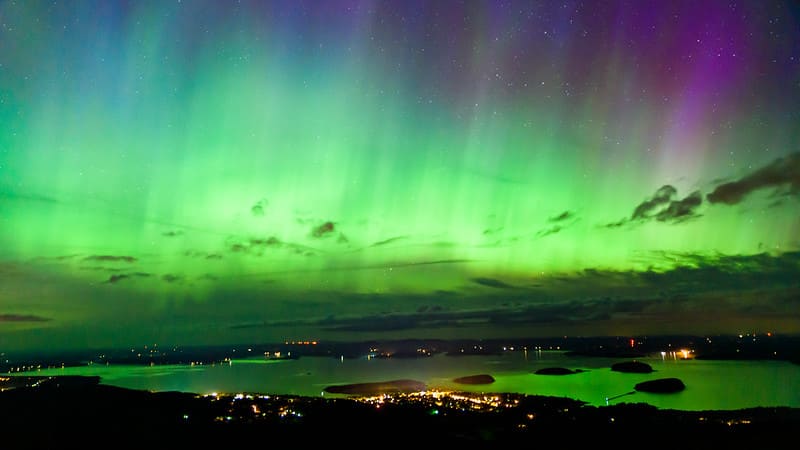
Viewing the Northern Lights in Maine
The Northern Lights, also known as the Aurora Borealis, can be seen in Maine on certain occasions.
To increase your chances of witnessing this natural wonder, follow these tips:
- Look for clear skies and minimal light pollution
- Plan your trip between September and April, when the chances are higher
- Head to dark, open spaces like Blue Hill Bay to get the best views
Remember, the Northern Lights are a natural phenomenon and can be unpredictable. However, with some planning and luck, you can spot them during your visit to Maine.
Meteor Showers and Celestial Events
Maine’s dark skies also provide great opportunities to watch meteor showers and other celestial events.
Keep an eye out for noteworthy skywatching events:
- August: Perseid meteor shower, known for its abundant bright meteors
- December: Geminid meteor shower, one of the year’s most impressive showers
In addition to these events, you can also step out on a clear night to enjoy the magnificent sight of the Milky Way. Just remember to venture away from city lights and utilize the best times to see the Milky Way between February and October.
Whether you’re a seasoned stargazer or a casual observer, Maine’s seasonal skywatching events and phenomena will leave you in awe.
Wildlife and Conservation Efforts
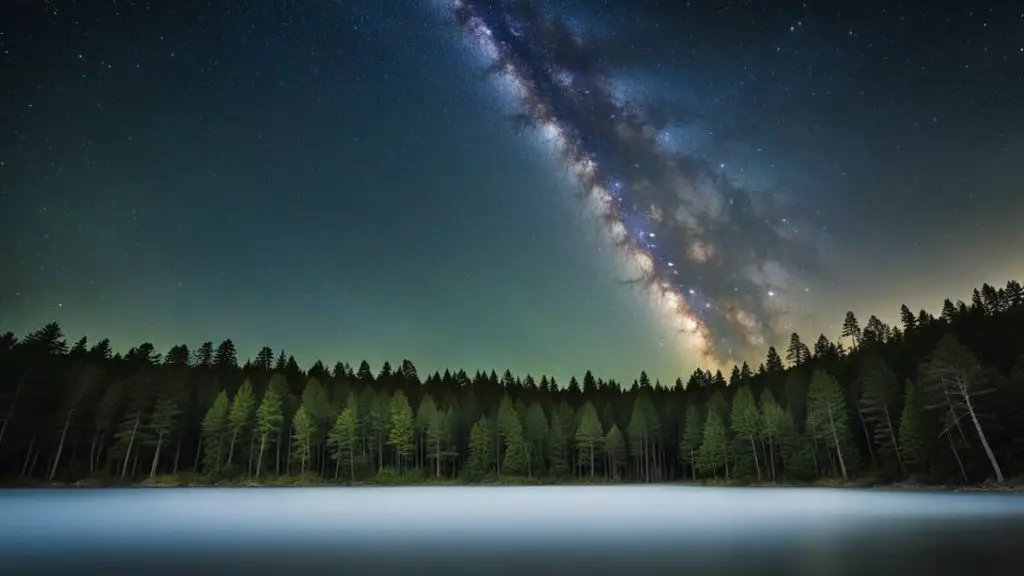
Protecting Maine’s Night Skies for Ecosystem Health
Maine’s night skies are not just necessary for stargazers; they also play a crucial role in the health of the ecosystem. Many animals depend on the natural cycles of light and darkness to maintain their circadian rhythm. In areas like Acadia, Aroostook County, and Cobscook Bay State Park, efforts are being made to conserve the night skies and protect the wildlife that calls these areas home.
To help understand the importance of protecting Maine’s night skies, let’s consider some key points:
- The circadian rhythm is the natural sleep-wake cycle in animals. It regulates essential functions such as sleep, hormone release, and body temperature.
- Nocturnal animals are particularly affected by light pollution, as their activities are heavily influenced by the availability of darkness.
- Wildlife populations and ecosystem health generally have a higher chance of thriving in areas where the night skies are preserved.
Maine has a few notable locations where conservation efforts are focused on protecting these important night skies:
- Acadia: In Acadia National Park, a light-pollution ordinance in Bar Harbor mandates “night sky-friendly” outdoor lighting on all new construction to preserve the natural darkness.
- Aroostook County: Northern Maine, including Aroostook County, is known for its dark skies. Efforts to protect the night environment and educate the community through events like the Aroostook County Night Sky Festival contribute to preserving this valuable natural resource.
- Cobscook Bay State Park: This park and the surrounding area provide a habitat for various species of wildlife. Preserving the night skies in Cobscook Bay is crucial for supporting these creatures and the ecosystem’s overall health.
By supporting and participating in conservation efforts, you play an essential role in preserving Maine’s night skies and the wildlife that depends on them for survival.
Read my dedicated article about the Effects of Light Pollution.
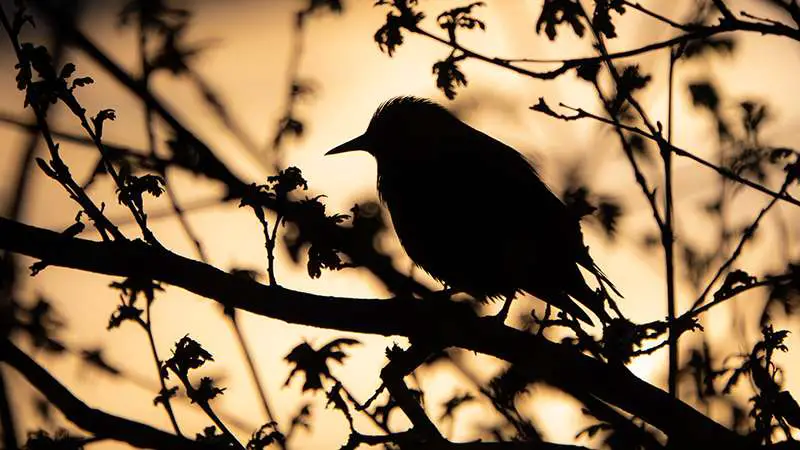
Legal Aspects and Community Involvement
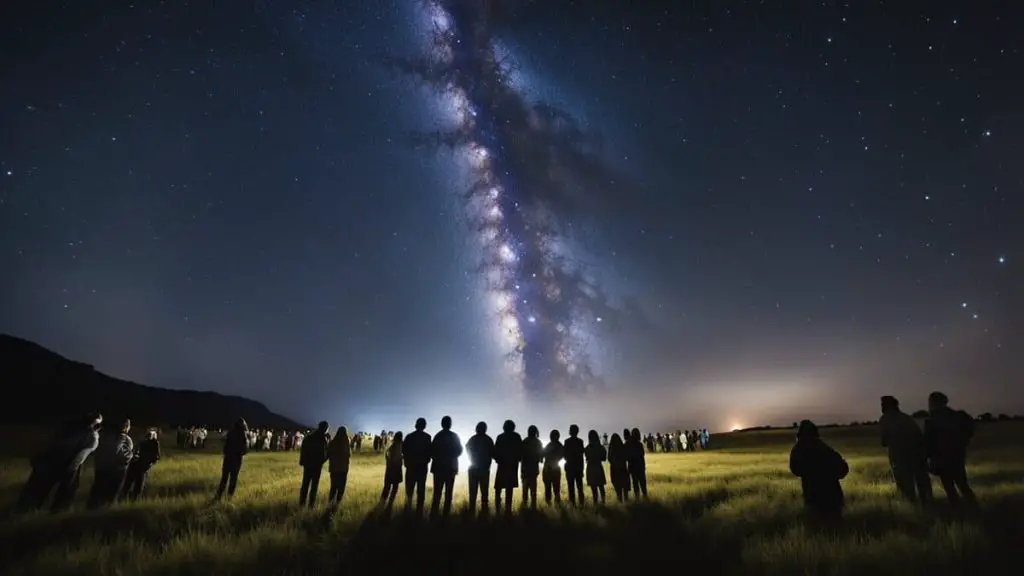
Maine has always been an incredible location for stargazing, boasting some of the East Coast’s darkest skies, allowing you to see the Milky Way. Communities across the state have been actively maintaining these dark skies for generations.
Dark Sky Ordinances and Local Initiatives
Several regions in Maine have implemented Dark Sky Ordinances to preserve the natural beauty of the night skies and minimize light pollution.
Some counties, like Aroostook County, have also taken significant steps to support these ordinances. These local efforts contribute to the success of statewide legislation and ongoing community involvement in maintaining the darkness of Maine’s skies.
Below is a brief list of steps that can help communities continue this trend:
- Educate the public on the benefits of dark skies and the importance of reducing light pollution.
- Promote Dark Sky-friendly lighting for homes and businesses.
- Create partnerships with local governments, regulatory agencies, and non-profit organizations like the International Dark-Sky Association (IDA).
In addition to the aforementioned ordinances, Maine is home to the Acadia National Park, which actively preserves its dark skies and even hosts stargazing events for enthusiasts. The Schoodic Institute, located within the park, has events like Stars Over Schoodic, where you can observe the Milky Way alongside fascinating celestial sights like Saturn and Jupiter and meteor showers.
Another vital aspect of Maine’s commitment to preserving dark skies is the International Dark Sky Park designation, which spans vast parts of the state. Thanks to the ongoing efforts of the local communities and government bodies, Maine is an ideal place for amateur astronomers to view the Milky Way and explore the wonders of the night sky.
Remember, your actions can make a difference in preserving the dark skies of Maine. By being aware of the local ordinances, participating in community initiatives, and using Dark Sky-friendly lighting, you can play a vital role in ensuring future generations can enjoy the mesmerizing beauty of the Milky Way in Maine.
Frequently Asked Questions
Can I stargaze in Maine during the winter months?
Yes, you can stargaze in Maine during the winter, though the Milky Way may not be as visible. Winter offers longer nights and clearer skies, making it ideal for observing other celestial bodies like constellations, planets, and occasionally the Northern Lights.
Are there any specific stargazing events or festivals in Maine besides Acadia Night Sky Week?
Apart from Acadia Night Sky Week, Maine hosts other events like the Aroostook County Night Sky Festival. These events often feature guided stargazing, astronomy talks, and sometimes, unique celestial phenomena viewings, offering diverse experiences for astronomy enthusiasts.
How can I contribute to preserving Maine’s dark skies?
To help preserve Maine’s dark skies, you can use dark sky-friendly outdoor lighting at home and participate in local awareness campaigns. Educating others about the impact of light pollution and supporting conservation initiatives are also great ways to contribute to this cause.
TL;DR
- The best time to view the Milky Way in Maine is between late July and August when the skies are clear and the moon is new.
- Prime stargazing locations include Acadia National Park, Blueberry Pond Observatory, and Schoodic Institute.
- Light pollution significantly affects night sky visibility; dark sky preserves in Maine offer optimal stargazing conditions.
- For astrophotography enthusiasts, essential gear includes a DSLR camera, tripod, and a red light flashlight.
- Participating in local events and using dark sky-friendly lighting are key ways to help preserve Maine’s dark skies.
Your curiosity and insights are what make our stargazing community vibrant!
If you have questions or experiences to share about exploring Maine’s night skies, I’d love to hear from you.
Comment below, and let’s keep the conversation sparkling like the stars we admire!




